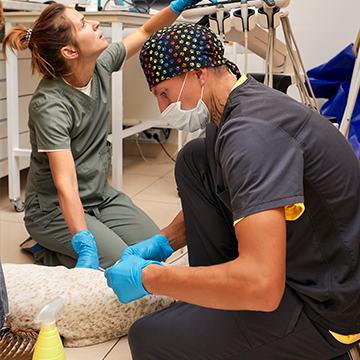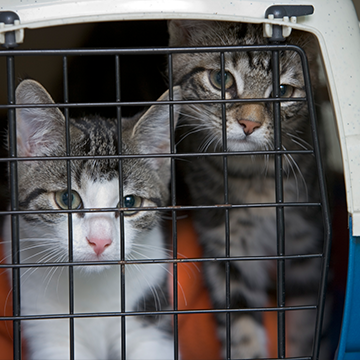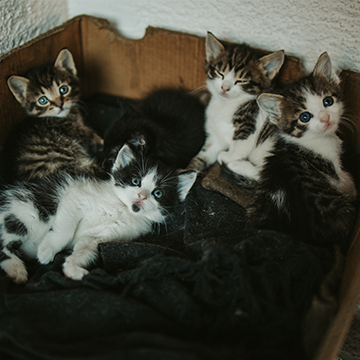At the AVMA Convention 2024, Dr. Becky L. Morrow, a renowned expert in Shelter Medicine and the Medical Director of Frankie's Friends, delivered a powerful presentation titled "High-Quality High Volume Spay/Neuter in Practice: An Evidence-Based Approach." Dr. Morrow's session provided attendees with a detailed look at how high-volume spay-neuter (HQHVSN) clinics can perform a high number of surgeries each day while maintaining excellent standards of care.
Drawing from over 15 years of experience and tens of thousands of surgeries, Dr. Morrow emphasized that quality care in HQHVSN settings is not only possible but achievable with the right protocols in place. Her evidence-based approach, backed by contributions from board-certified surgeons and shelter medicine experts, is designed to minimize stress for both patients and staff while ensuring top-notch care.
This blog builds on Dr. Morrow’s insights, providing veterinary professionals with a deeper understanding of the best practices for HQHVSN clinics, the challenges they might face, and how to overcome them. Whether you're considering implementing a high-volume program or seeking to enhance an existing one, the lessons from Dr. Morrow’s presentation offer invaluable guidance for ensuring that efficiency never comes at the expense of quality.
You can read the original coverage of her presentation on the AVMA website here.

Veterinarians in HQHVSN clinics can perform 30-60 surgeries per day.

Population control requires sterilizing at least 75% of fertile females in feral animal populations.

A TNR program on a Florida university campus reduced the feral cat population by 66%.

In targeted spay-neuter program communities, overall spay-neuter rates, including in private practices, have increased.
Why HQHVSN is good, but also hard
High-quality high-volume spay-neuter (HQHVSN) programs are powerful tools in managing pet overpopulation while ensuring animal welfare. However, these programs require careful planning and execution to balance efficiency with quality care. Understanding both the benefits and challenges can help veterinary professionals implement these programs successfully.


Benefits of HQHVSN Programs
- HQHVSN clinics can perform dozens of surgeries daily, making a significant impact on controlling the populations of feral and stray animals.
- By streamlining the process and increasing the number of surgeries, clinics can offer lower-cost services without compromising quality.
- Reducing the number of unowned animals decreases the risk of disease transmission and improves public health outcomes.
- Veterinarians working in HQHVSN clinics develop advanced skills in efficient, precise surgical techniques due to the high volume of procedures.
- Properly implemented HQHVSN programs ensure that animals receive timely care, reducing the risk of unwanted litters and improving overall welfare.
Challenges of HQHVSN Programs
- The volume of surgeries can lead to concerns about whether quality is being sacrificed for quantity. Following evidence-based protocols is essential to ensure each patient receives the best care possible.
- The fast-paced nature of HQHVSN clinics can lead to high stress levels among staff, contributing to burnout and higher turnover rates. Prioritizing team well-being is crucial for sustainability.
- With so many animals in the clinic at once, managing stress in patients, particularly in cats, can be challenging. Dr. Morrow’s approach to minimizing stress - such as keeping cats in their carriers - helps address this issue.
- HQHVSN programs require efficient coordination of multiple teams and resources. Ensuring that everyone knows their role and follows the correct procedures is key to smooth operations.
- Some communities may be skeptical of the quality of care provided in high-volume settings. Public education and transparent communication are vital to gaining community trust and support.
Expert advice for vets running HQHVSN programs
Ensuring high-quality care in HQHVSN programs requires adherence to evidence-based practices that prioritize patient welfare while optimizing efficiency. Dr. Becky Morrow's presentation at the AVMA Convention highlighted several key strategies, and additional resources offer further insights into maintaining high standards in these settings.
Key best practices according to experts

HQHVSN programs should follow well-established protocols backed by research and expert input. Dr. Morrow emphasized the importance of using protocols like the TDK IM anesthesia combination (butorphanol, dexmedetomidine, and ketamine) for feline patients to minimize stress and ensure predictable, smooth recovery

Veterinary staff should undergo specialized training in HQHVSN techniques. Programs like those offered by the Humane Alliance and the Association of Shelter Veterinarians provide valuable resources and training to enhance skills and ensure that teams are prepared to deliver high-quality care

Reducing stress in high-volume settings is critical. Techniques such as keeping cats in their carriers during the entire visit and utilizing appropriate sedation protocols can greatly improve patient outcomes. This approach minimizes handling and interaction with other animals, reducing anxiety and improving overall care

Effective HQHVSN clinics depend on well-coordinated teams where every member understands their role. Clearly defined protocols and regular communication help prevent errors and ensure smooth operations, even in fast-paced environments. Dr. Morrow's approach, where everyone in the clinic knows exactly what needs to be done, is a model of this principle in action

Continuous improvement requires tracking and analyzing data related to patient outcomes, surgical times, and complication rates. Regularly reviewing this data helps identify areas for improvement and ensures that the program maintains its high standards over time. This practice is endorsed by organizations like the ASPCA and the Association of Shelter Veterinarians

Following guidelines such as the Association of Shelter Veterinarians’ Veterinary Medical Care Guidelines for Spay-Neuter Programs is crucial to maintaining consistency in care and ensuring that every patient receives the best possible treatment
How can your clinic get ahead of other local practices?
The field of HQHVSN programs is constantly evolving as new research, technologies, and practices emerge. Some recommendations for practices expanding these programs includes:
Increase your use of technology
Automation and technology are set to play a larger role in HQHVSN clinics. Innovations such as automated patient tracking systems, digital anesthesia monitoring, and data analysis tools will help improve efficiency and patient outcomes. Technology-driven advancements in surgical techniques and pain management protocols will also continue to refine the quality of care
Focus on preventative care
Beyond spay-neuter, future HQHVSN programs are likely to expand to include preventive care services such as vaccinations, parasite control, and wellness exams. This holistic approach will help address broader community health needs while still maintaining a focus on sterilization procedures.
Follow changes in anesthesia and pain management
Ongoing research into anesthesia and analgesia is paving the way for new protocols that reduce stress and improve recovery times. Clinics are expected to adopt safer, more efficient anesthesia methods that cater to the specific needs of high-volume environments, ensuring both patient safety and comfort.
Go mobile
Mobile HQHVSN units will continue to grow in popularity, particularly in underserved and rural areas. These mobile clinics allow veterinarians to reach pet populations that might otherwise go unserved, contributing to more widespread population control and animal welfare efforts.
Work with your community
Education and outreach will be critical to the future of HQHVSN programs. Veterinarians will need to engage with the community to promote the benefits of spay-neuter, dispel misconceptions, and provide resources to ensure ongoing pet care after sterilization procedures.
Look for ways to collaborate
HQHVSN programs will increasingly collaborate with animal shelters, public health organizations, and private veterinary practices. This collaboration will foster a more comprehensive approach to animal welfare, leveraging the strengths of each sector to maximize impact on overpopulation and community health.
These trends point to a future where HQHVSN clinics become even more integral to animal welfare and public health efforts, combining innovation with compassionate care to address the evolving needs of communities and their pets.
For more information, consult the AMVA website.
For more info, visit our sources
The American Veterinary Medical Association - https://www.avma.org/news/ensuring-quality-high-volume-spay-neuter
The Humane Society Veterinary Medical Alliance - https://www.hsvma.org/case_for_low_cost_high_quality_high_volume_spay_neuter_0811111